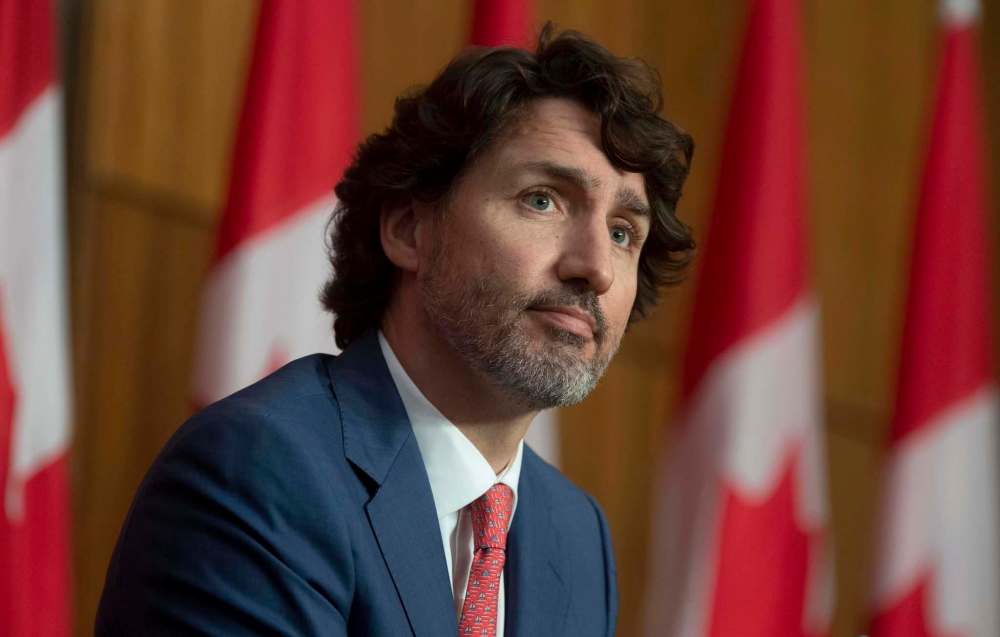Expressions of outrage and sorrow are not enough
Read this article for free:
or
Already have an account? Log in here »
To continue reading, please subscribe:
Monthly Digital Subscription
$0 for the first 4 weeks*
- Enjoy unlimited reading on winnipegfreepress.com
- Read the E-Edition, our digital replica newspaper
- Access News Break, our award-winning app
- Play interactive puzzles
*No charge for 4 weeks then price increases to the regular rate of $19.00 plus GST every four weeks. Offer available to new and qualified returning subscribers only. Cancel any time.
Monthly Digital Subscription
$4.75/week*
- Enjoy unlimited reading on winnipegfreepress.com
- Read the E-Edition, our digital replica newspaper
- Access News Break, our award-winning app
- Play interactive puzzles
*Billed as $19 plus GST every four weeks. Cancel any time.
To continue reading, please subscribe:
Add Free Press access to your Brandon Sun subscription for only an additional
$1 for the first 4 weeks*
*Your next subscription payment will increase by $1.00 and you will be charged $16.99 plus GST for four weeks. After four weeks, your payment will increase to $23.99 plus GST every four weeks.
Read unlimited articles for free today:
or
Already have an account? Log in here »
Hey there, time traveller!
This article was published 02/06/2021 (1650 days ago), so information in it may no longer be current.
Governments across Canada lowered flags to half-mast this week and issued public statements acknowledging the horrific discovery of an unmarked gravesite containing the remains of 215 Indigenous children near a former residential school in Kamloops, B.C.
Prime Minister Justin Trudeau said he was “heartbroken” over the discovery. Manitoba Premier Brian Pallister called it “horrifying.”
All agree it’s further evidence of Canada’s racist and inhumane assimilation policies waged against Indigenous people, the impacts of which continue to be felt today.

Governments are offering help to identify more unmarked graves and abandoned cemeteries used to bury deceased children who attended residential schools. The Truth and Reconciliation Commission reported six years ago the existence of many such graves and the need to locate them. More than 4,100 deaths have been identified, but the commission estimated there are likely thousands more.
Finding those graves and bringing peace and closure to the affected families and communities is extremely important work. Governments, including municipalities, should do everything possible to support those efforts.
However, that’s not enough. The unjust and unequal treatment of First Nations, Métis and Inuit Canadians has not disappeared.
Residential schools may no longer exist, but separating Indigenous children from their families and communities remains a common practice among governments through the child-welfare system. About 90 per cent of children in care in Manitoba are Indigenous. While many alternatives have been proposed over the years to keep Indigenous children in their communities (instead of sending them to non-Indigenous foster homes), governments have been slow to respond.
The result is thousands of Indigenous children each year are separated from their communities and deprived of loving, caring and culturally appropriate upbringings most Canadians take for granted. Many are neglected and abused while in care and are left to fend for themselves in later years. It creates conditions that lead to higher rates of addiction, incarceration and poor health outcomes among Indigenous people.
Meanwhile, the atrocious social and economic living conditions that exist on many reserves, including a lack of basic services such as safe drinking water and access to public schools, are still largely ignored by governments. They continue to lead to, among other things, economic hopelessness and high rates of suicide among Indigenous youth.
By some measurements, the situation is getting worse. The proportion of Indigenous people in federal prisons has doubled, from 17 per cent to 34 per cent, in Canada from 2001 to 2020. It’s higher in the Prairies: about 70 per cent of inmates at Stony Mountain Institution north of Winnipeg are Indigenous.
Manitoba’s chief provincial public health officer, Dr. Brent Roussin, on Monday acknowledged the discovery of the unmarked gravesite at Kamloops, calling it “one example among thousands of Canada’s history of colonization and oppression.”
“This terrible history is not staying in the past, though; it continues to affect Indigenous people today,” he said, reminding Manitobans of the poor health outcomes and disparities among Indigenous people. “The pandemic has only further highlighted this.”
He said efforts are needed now to improve conditions among Indigenous people.By some measurements, the situation is getting worse. The proportion of Indigenous people in federal prisons has doubled, from 17 per cent to 34 per cent, in Canada from 2001 to 2020.
That’s the point. It’s important to acknowledge the past and continue to uncover the truth about residential schools and Canada’s assimilation policies. The effects of those policies have caused deep-rooted and multi-generational harm. However, the structural racism and colonial mentality that drove those policies continue today. Unless governments take concrete action to change that, the public outcries and expressions of sorrow from elected officials over residential schools will be meaningless.








.jpg?h=215)